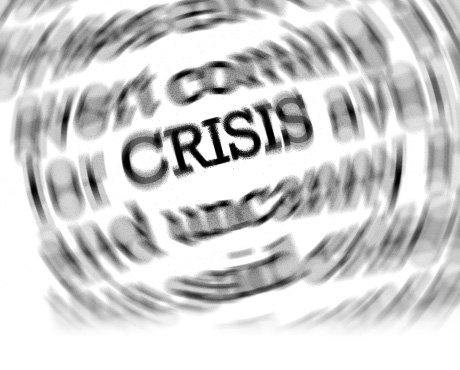Organizations face an increasing array of potential crises that can disrupt operations, damage reputations, and impact stakeholders. According to a 2023 PwC Global Crisis Survey, 95% of business leaders expect to face a crisis within the next two years, yet only 39% feel highly confident in their ability to respond effectively. Identifying potential crisis scenarios before they materialize allows organizations to develop targeted response plans, allocate resources efficiently, and minimize negative impacts when incidents occur. This comprehensive guide will help risk managers and organizational leaders establish systematic approaches to crisis identification and preparation.
Understanding the Scope of Crisis Scenarios
Crisis scenarios come in many forms and can affect organizations differently based on their industry, size, location, and operational model. Natural disasters, cybersecurity breaches, workplace violence, product recalls, financial misconduct, and public relations issues represent just a few potential threats. The Institute for Crisis Management reports that 65% of organizational crises are “smoldering” issues that could have been identified and addressed before escalating into full-blown emergencies.
To effectively identify relevant crisis scenarios, organizations must first understand their risk landscape. This includes evaluating internal vulnerabilities, external threats, and stakeholder expectations. A manufacturing company, for example, may focus on supply chain disruptions and workplace safety incidents, while a financial services firm might prioritize data breaches and regulatory compliance issues.
Conducting a Systematic Risk Assessment
The foundation of crisis scenario identification lies in conducting thorough risk assessments. This process involves several key steps:
Start by gathering a diverse team of stakeholders from different departments and levels within the organization. This cross-functional approach ensures various perspectives are considered when identifying potential threats. Include representatives from operations, finance, legal, HR, communications, and other relevant departments.
Create a comprehensive list of potential crisis scenarios by reviewing historical incidents, industry trends, and emerging risks. The National Institute of Standards and Technology (NIST) recommends categorizing risks into strategic, operational, financial, and compliance-related threats. This categorization helps ensure no major risk areas are overlooked.
For each identified scenario, assess both the likelihood of occurrence and potential impact. Use a risk assessment matrix to prioritize scenarios based on these factors. According to research by Deloitte, organizations that use structured risk assessment frameworks are 2.5 times more likely to detect potential crises early.
Monitoring Early Warning Signs
Effective crisis identification requires establishing robust monitoring systems to detect early warning signs. Organizations should implement multiple monitoring channels:
Media monitoring tools can track traditional and social media mentions of your organization, industry, and relevant keywords. Set up alerts for specific topics and track sentiment changes that might indicate brewing issues.
Internal reporting systems allow employees to flag potential problems before they escalate. Studies show that organizations with strong internal reporting cultures identify potential crises an average of 2-3 months earlier than those without such systems.
Regular stakeholder surveys and feedback mechanisms help gauge satisfaction levels and identify emerging concerns. This proactive approach can reveal potential issues before they become crises.
Assessing Impact and Severity
Once potential crisis scenarios are identified, organizations must evaluate their potential impact across multiple dimensions:
Financial Impact: Calculate direct costs (property damage, legal fees, regulatory fines) and indirect costs (lost revenue, decreased productivity, increased insurance premiums).
Reputational Impact: Consider how different scenarios might affect stakeholder trust, brand value, and market position. The 2023 Weber Shandwick Reputation Report indicates that companies with strong reputation management programs recover from crises 50% faster than those without.
Operational Impact: Assess how various scenarios could disrupt normal business operations, including supply chain disruptions, service interruptions, or workforce availability.
Developing Response Protocols
For each identified crisis scenario, develop specific response protocols:
Create detailed response plans that outline immediate actions, communication procedures, and recovery steps. According to the Business Continuity Institute, organizations with documented crisis response plans are 4 times more likely to survive a major crisis.
Assign clear roles and responsibilities to team members, including primary and backup personnel for key positions. This ensures continuity of response even if key team members are unavailable.
Establish communication templates and approval processes for different scenarios. Pre-approved messaging helps organizations respond quickly while maintaining consistency.
Testing and Improvement
Regular testing and refinement of crisis identification processes is essential:
Conduct scenario-based exercises to test response plans and identify gaps. The Federal Emergency Management Agency (FEMA) recommends quarterly tabletop exercises for high-priority scenarios.
Review and update crisis identification procedures at least annually or after significant organizational changes. This ensures processes remain relevant and effective.
Document lessons learned from both exercises and actual incidents to improve future crisis identification and response capabilities.
Conclusion
Identifying potential crisis scenarios requires a systematic approach combining thorough risk assessment, continuous monitoring, and regular testing. Organizations that invest in comprehensive crisis identification programs position themselves to respond more effectively when incidents occur. Success depends on maintaining updated processes, engaging stakeholders at all levels, and creating a culture of risk awareness.
To begin strengthening your organization’s crisis identification capabilities:
- Establish a cross-functional team dedicated to risk assessment and crisis planning
- Implement formal monitoring systems for both internal and external threats
- Develop and regularly test response protocols for identified scenarios
- Create feedback mechanisms to continuously improve identification processes
Remember that crisis identification is not a one-time exercise but an ongoing process that requires regular attention and updates to remain effective.














